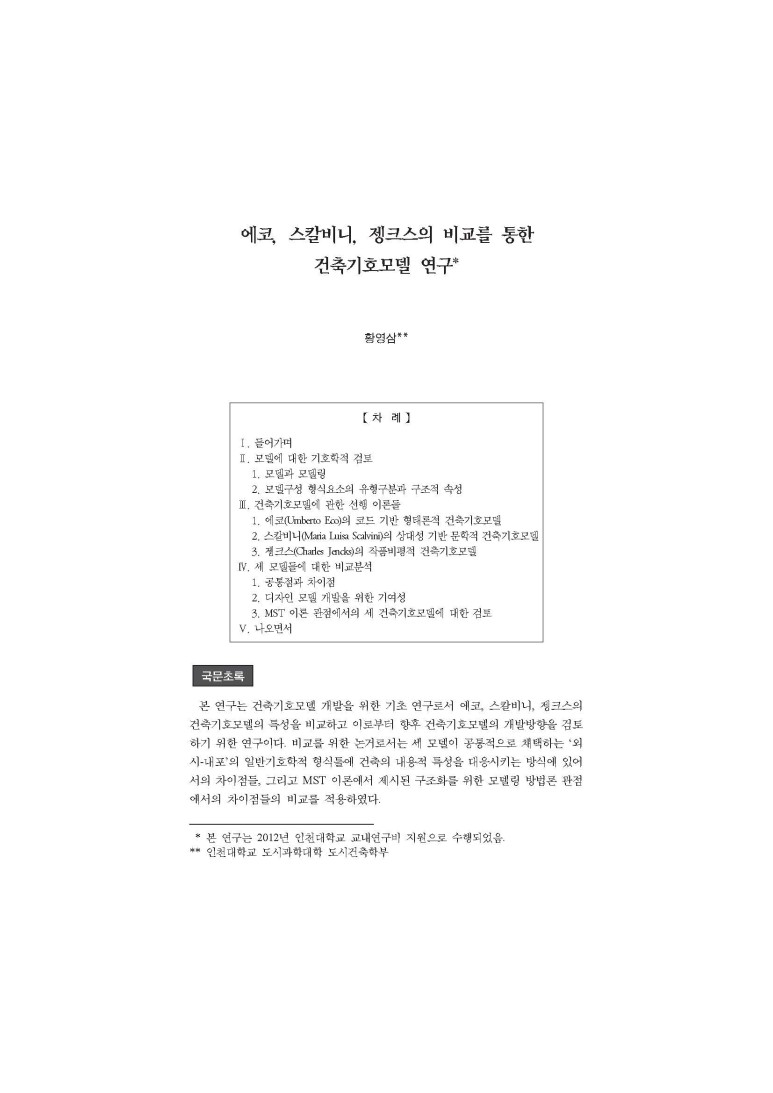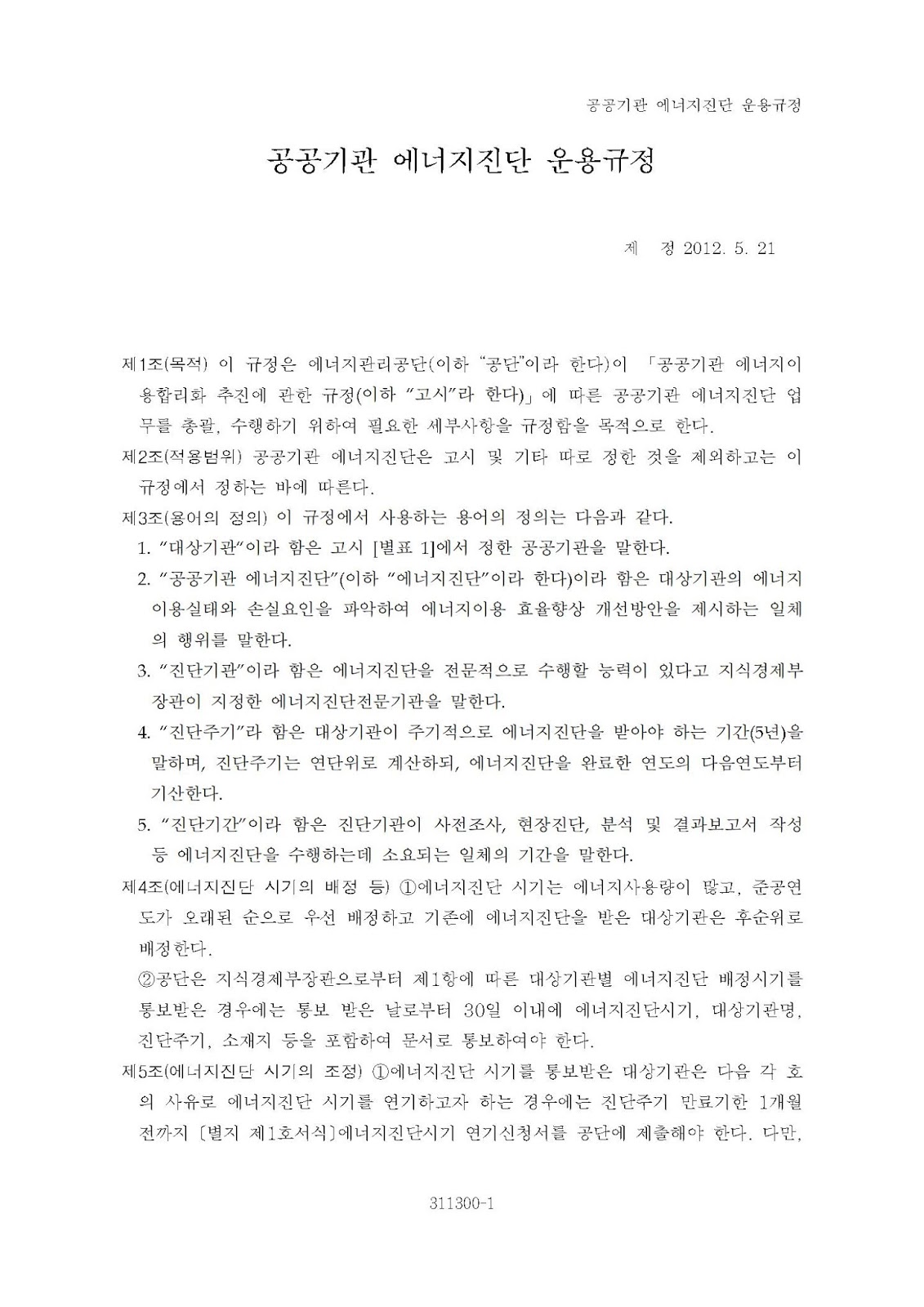에코, 스칼비니, 젱크스의 비교를 통한 건축기호모델 연구
에코, 스칼비니, 젱크스의 비교를 통한 건축기호모델 연구
Study of Semiotic Architectural Model by Comparision of Eco, Scalvini and Jencks
저자 황영삼
소속 인천대학교
학술지정보 기호학연구 KCI
발행정보 한국기호학회 2014년
자료제공처 국회도서관 한국학술정보 NRF
주제분야 인문학 > 철학 , 인문학 > 언어학
<초록>
본 연구는 건축기호모델 개발을 위한 기초 연구로서 에코, 스칼비니, 젱크스의 건축기호모델의 특성을 비교하고 이로부터 향후 건축기호모델의 개발방향을 검토하기 위한 연구이다. 비교를 위한 논거로서는 세 모델이 공통적으로 채택하는 ``외시-내포``의 일반기호학적 형식틀에 건축의 내용적 특성을 대응시키는 방식에 있어서의 차이점들, 그리고 MST 이론에서 제시된 구조화를 위한 모델링 방법론 관점에서의 차이점들의 비교를 적용하였다. 먼저 세 모델에 대한 비교검토 결과 외시-내포 원리를 근간으로 하는 단위모델의 형식틀은 동일하지만, 외시면과 내포면 각각을 채우는 건축적 내용이 달랐고, 그 결과로 나타나는 단위기호들 간 관계망 모델, 모델의 구조 등 여러 측면에서 차이가 나타났다. 요약하자면 에코의 모델은 형태론적 모델이고, 스칼비니의 모델은 문학적 모델이며, 젱크스의 모델은 절충적 비평모델이라고 할 수 있다. MST 이론의 기호모델링 방법론 관점에서의 비교에서도 폭넓은 차이점들이 나타났다. 먼저 단일체, 복합체, 코드체, 비유체로 구분되는 기본적 형식요소를 다루는 범위에서 차이가 나타났고, 1차성, 2차성, 3차성으로 구분된 형식요소들 간 위계성에 따라 기호성이 고도화되어 가는 방식에서도 차이가 나타났다. 또한 모델의 구조화 방식에 있어서 수사 층위를 다루는 방식과 범위에서도 차이가 나타났다. 연구 후반부에는 향후 건축기호모델의 연구방향에 대하여 논의하였다. 여기에는 일반기호학 원리만으로는 모델에 포함되지 못하는 건축분야 고유의 학문범위에 대한 내용적 형식요소와 그에 대한 형식틀을 도출해내는 작업, 그리고 세 모델들의 지향점과 장단점을 포괄할 수 있는 상위 메타모델의 필요성이 논의되었다.
This research is a preliminary study to develop a semiotic architectural model. In this resech, comparison between Eco, Scalvini and Jencks, leading architectural semioticians, has be conducted with the purpose of suggesting research directions towards a semiotic model for architectural design. The MST theory advocated by Sebeok and Danesi is employed as the basis of logical argument. Comparison of the models by the three semioticians has resulted as follows. The dichotomy of denotation and connotation is commonly adopted by the three models, but they differ in most comparisons checkpoints from unit modeling to relationship modeling, resulting in differing model structures. Briefly, Eco`s is a morphological model, Scalvini`s is a literary model, and Jencks`s is a criticism model. Several research directions have been suggested. First, different formal model constituents need to be identified which are to be organized into a relationship network. The MST theory will be helpful for this purpose, with its ways of categorizing model constituents and for relationship networking. It suggests two main categories of model elements: singularized, composite, cohesive, connective models; and primary, secondary and tertiary models. Sign features go level up through these hierarchies. Secondarily, a way of model structuring has been suggested. Model can be structured by three layers: paradigm-syntagma layer, denotationconnotation layer, and rhetoric layer, for the purpose of manipulating both physical and abstract features of architecture. Thirdly, a new way of modeling should be worked out additionally to cover architecture specific tasks which are not resolvable in the current semiotic model. This new requirement comes up for the reason that not all architecture features can be covered up by the current general semiotic modeling principles. Finally, a hyper level meta model is required to comprehend the features and perspectives of those three models reviewed in this research. The new model should also be comprehensive enough to invite the current semiotic modeling methodologies as well as the one for the architecture specific model mentioned above.
저희 (주)한국녹색인증원은 '지속가능한 저탄소 녹색건축인증 기술연구소'의 전문기업으로 설립되어, 빠른 제도 변화와 변모하는 건설환경에 이바지하고자 합니다. (주))한국녹색인증원은 건축, 도시, 생태분야가 녹색건축물에 접목될 수 있도록 적절한 요소분석을 통해 에너지 절감형 건축, 자생적 생태환경, 온열환경, 빛환경의 면밀한 조사와 연구로 고객의 삶의 질 향상 및 더 나아가 인류의 존속성에 그 목적을 두고 있습니다. 한국녹색인증원은 친환경컨설팅 전문업체로 주택성능등급, 그린홈, 에너지소비총량제, 에너지성능지표검토서, 건물에너지효율등급, 장수명주택







(%EC%A0%9C19819%ED%98%B8)(20250501)001.jpg)
(%EC%A0%9C34657%ED%98%B8)(20240710)001.jpg)
댓글
댓글 쓰기